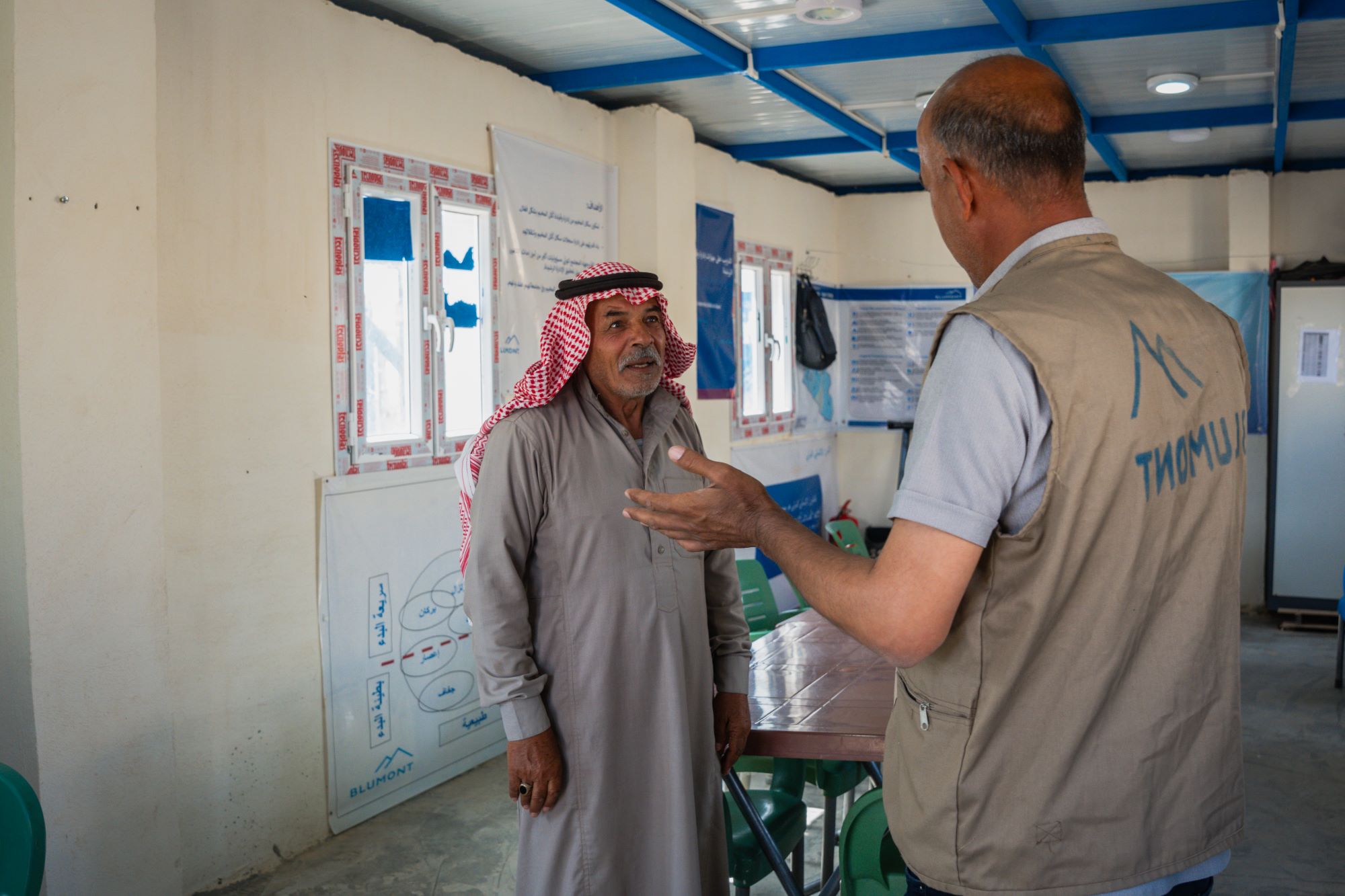Tens of thousands of people live in northeast Syria’s displacement camps and more are arriving every day as people flee Lebanon.[1] To meet their changing needs, the USAID/BHA-funded Shelter and Food Emergency Response (SAFER) program is tapping into the camp communities’ most vital resource–the people. Building community trust and ensuring residents’ voices are heard helps us better provide services in camps.
As part of our community-based approach to camp management, residents play an active role in how assistance is delivered. We operate side-by-side with community leaders who understand what residents need.

Community leaders play an important role in our team’s decision-making processes in displacement camps in northeast Syria.
A key element of engagement is regular meetings with block and sector leaders in the camp. Block leaders are elected representatives to represent approximately 20 households; sector leaders represent larger areas within the camp. The leaders serve for six months, allowing for regular rotation of representation and supporting a gender balance. This system brings in fresh perspectives and provides more residents with the opportunity to develop leadership skills. We hold bi-annual capacity-building trainings for camp leaders. These two-day sessions cover topics including humanitarian principles and protection standards.
Meetings with community leaders are a crucial link between camp residents, our team, and other humanitarian actors in the camp. “We discuss new information from our organization or others working inside the camp, which includes a map of services or assistance provided,” said Mahmoud, a member of Blumont’s SAFER team.

Displacement camps under SAFER’s management are divided into blocks and sectors, each of which have an elected community representative.
While Blumont has been operating in northeast Syria since 2018, the situation evolves every day. In such a dynamic environment, community leadership helps us identify and address emerging challenges. Sabt, a sector leader, said: “At each meeting, we raise the camp residents’ requests for all the obstacles they have. The camp management’s door is always open to us.”
This open-door policy has led to better communication and faster, more coordinated solutions. “If [SAFER] can solve concerns within their projects, they’ll get right on it. If not, they will attempt with the other organizations that operate within the camp,” Sabt said.
Adula, a block leader, said, “Our role in communicating camp residents’ daily obstacles involves multiple responsibilities. For example, if there is an issue with distributing bread to people in need regarding quality or quantity, our duty is to notify the organization.”

SAFER’s community mobilization team meets with community leaders as well as other camp residents, including marginalized groups, to ensure their voices are heard.
Communication and engagement reach beyond community leaders. Every day, our teams are in the community, talking with residents, conducting activities or awareness sessions, and meeting with marginalized groups. We hold quarterly discussions with youth and women, including minorities and people with disabilities. These consultations provide a platform for voices that might otherwise go unheard. Their unique needs and perspectives inform camp management decisions.
Camp residents are empowered to participate in community matters through participation in leadership elections, meetings, and activities. And when feedback is translated into action, we continue to build the trust that helps our team best support the community. By placing the community at the center of decision-making processes, we’re addressing immediate needs more effectively and residents are developing skills they can use as they rebuild their lives and communities.
[1] https://reliefweb.int/report/syrian-arab-republic/unhcr-syria-short-brief-response-displacement-lebanon-syria-reporting-period-24-september-30-october-2024



